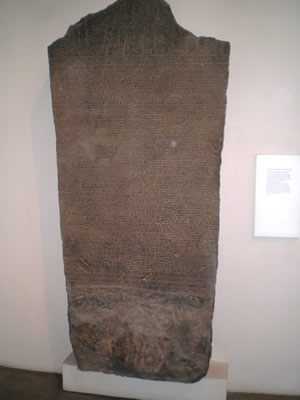Hamadab

Hamadab is the name for an ancient city of ruins located in Sudan. It appears to have been abandoned 4th century AD. The name is borrowed from the nearby village of al Dumat Hamadab, as the ancient name of the city is initially unknown. The ruins lie about 3 kilometres (1.9 mi) south of Meroë. They consist of two hills, 200 by 250 metres (660 ft × 820 ft) in width and length, one being 500 metres (1,600 ft) in height, and the other being half of that. The two hills are separated from each other within the Nile. In 1914, a temple was excavated northeast of the settlement; it included pillars dedicated to Queen Amanirenas and her son, Akinidad. While Amun is suspected, it is unknown which god was worshiped in the temple. Other excavations have occurred since 2001. They revealed mud brick built houses surrounded by a wall.
References
- Wolf, Pawel. "Hamadab – Das Hauptquartier des Akinidad?", in Der Antike Sudan. 15, 2004, pp. 83–97, ISSN 0945-9502.
Coordinates: 16°54′42″N 33°41′31″E / 16.911667°N 33.691944°E